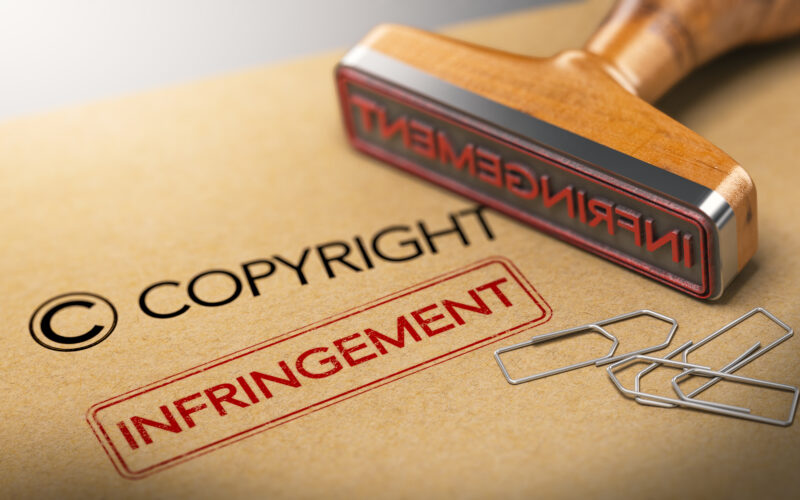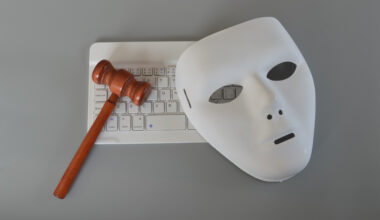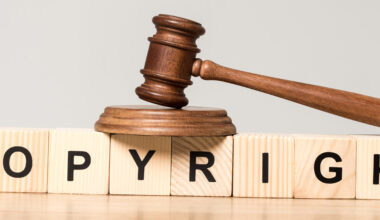A Polish collecting society (the CS or plaintiff) sued a Polish cable TV operator (the defendant) for infringement of the managed copyrights, requesting that the court award the CS punitive damages to be paid by the defendant. The plaintiff claimed that the defendant was re-broadcasting audiovisual works (charging a fee) without the right holders’ permission to do so. Although the parties were negotiating an agreement, the discussed audiovisual works were exploited by the defendant without any contractual basis. The CS in question was granted permission by the Minister of Culture to manage the copyrights in the field of broadcasting and re-broadcasting. The CS’s claim was based on art.79(1) of the Polish Copyright Act (the Act on Copyright and Related Rights—the LCRR) which sets forth multiple remedies against infringement of copyright. The right holder may request that the infringing party:
1. cease the infringement;
2. redress the consequences of the infringement
3. repair the inflicted damage on general terms;
4. repair the inflicted damage by payment of double or, where the infringement is willful, triple the amount of appropriate remuneration that would have been due as of the time it was claimed in exchange for the right holder’s consent for the use of the work (punitive damages);
5. surrender anything gained owing to the infringement.
The CS in question initiated a civil action against the defendant before the District Court claiming payment of triple the amount of the appropriate remuneration that would have been due if the plaintiff had given his consent to exploitation of the infringed audiovisual works. The court in question agreed with that and specified the amount of the due payment, which substantially constitutes punitive damages. The defendant filed an appeal against this judgment with the Court of Appeal. This court partially agreed with the defendant, stating that the “appropriate remuneration” was assessed according to the wrong criteria. The District Court said that the appropriate remuneration was 2.8 per cent of the defendant’s revenue, as such a rate is close to the market value reflected by the agreements concluded by the plaintiff with other entities re-broadcasting audiovisual works within the CS’s portfolio. The Court of Appeal disagreed with this view, taking the view that the appropriate remuneration should be specified according to the criteria laid down in art.110 of the LCRR “only”. This provision stipulates that appropriate remuneration collected by collecting societies should reflect the amount of revenue derived from the use of works along with the nature and scope of use of such works. Should the parties not have agreed a particular amount of remuneration and the respective collecting society not have a tariff accepted by the Copyright Commission, the court should determine the appropriate remuneration according to criteria set forth in art.110 of the LCRR. It was emphasised by the Court of Appeal that appropriate remuneration “cannot be determined according to market value”, as a market does not exist in this case, where the CS is the only organisation managing the infringed copyright. What is more, according to the court, the appropriate remuneration should be specified on an individual basis according to the selected user, without making a comparative analysis of remuneration paid by other persons. As a consequence, the Court of Appeal reduced the appropriate remuneration to 1.6 per cent of the defendant’s revenue. However, the Court of Appeal upheld the District Court’s reasoning regarding the punitive damages, stating that as such they were due to the plaintiff. In consequence, both the plaintiff and the defendant filed final appeals against this judgment with the Supreme Court.
First of all, the defendant argued that the court had violated art.13 of the Enforcement Directive, which should have been directly applied by the court while giving the judgment. In the defendant’s view, punitive damages are not a remedy allowed under the Enforcement Directive against infringement of IP rights. Secondly, the defendant affirmed that he could not be held liable for the fact that the respective agreement on using the works had not been concluded as the CS had imposed remuneration upon it unilaterally and the CS’s representation was mandatory for him by virtue of law, i.e. art.21(1) of the LCRR. Furthermore, the defendant claimed that the collecting society cannot levy—on behalf of authors—an extra charge for re-broadcasting under art.70(2) of the LCRR, as re-broadcasting is not listed in this provision of law. Therefore such an extra charge cannot be taken into account while calculating punitive damages which is—depending on the case—double or triple the appropriate remuneration.
With respect to the plaintiff, it claimed that the Court of Appeal unlawfully reduced the amount of the appropriate remuneration, as art.110 of the LCRR does not set forth exclusive criteria for determining the amount of this remuneration for the sake of punitive damages.
Supreme Court judgment
First of all, the court agreed that collecting societies cannot levy—on behalf of authors—an extra charge for re-broadcasting since it is not stipulated in art.70(2) of the LCRR. Nevertheless, as the court stated, re-broadcasting is one of the fields of exploitation of an audiovisual work for which the right holder (e.g. producer) may demand normal (first) remuneration which is not this extra (second) charge. Consequently, the Supreme Court dismissed the defendant’s argument that the CS in question was not entitled to represent right holders when demanding damages for wrongful exploitation of works. Furthermore, the court underlined in this case the CS was not claiming payment of the discussed extra (second) charge, but that its claim concerned the unpaid normal (first) remuneration for exploitation of the works in question. Moreover, the plaintiff benefited from the presumption that it was authorised to represent right holders to audiovisual works under art.105(1) of the LCRR. As the court stated, this presumption had never been rebutted in this case.
Secondly, the Supreme Court responded to the argument that punitive damages cannot be awarded, as this would be contrary to art.13 of the Enforcement Directive. The court observed that there were arguments for the view that the current provisions of the LCRR granting punitive damages to the right holder seeking redress for wrongful exploitation of protected works may be incompatible with EU law. Nevertheless, the law as it exists confers the right to punitive damages and currently there is no option to deny this remedy to legitimate right holders. Furthermore, the court refused to apply art.13 of the Enforcement Directive directly. The court invoked well-established jurisprudence of the Court of Justice of the EU (CJEU) prohibiting the so-called horizontal direct effect of directives. Thirdly, the court did not find the defendant exonerated because the plaintiff had not entered into agreements with it for the use of the works in question (because of the remuneration imposed by the CS). The Supreme Court argued that someone is always liable for infringement if it exploits protected works without an agreement with a legitimate right holder. The court underlined that the reason for infringement is irrelevant: the infringement takes place as long as the perpetrator exploits the works without consent of the legitimate party.
Last but not least, the court analysed the criteria for assessment of appropriate remuneration. In this respect, the court disagreed with the Court of Appeal, as the Supreme Court stated that while determining the appropriate remuneration each court should take into account market prices on domestic and foreign markets, including the fees charged by other collecting societies for exploitation of works in the same field.
Commentary
This case includes many issues but the most crucial one seems to be the punitive damages claimed for infringement of copyright. The Supreme Court realized that such a remedy may be incompatible with EU law but emphasised that de lege lata Polish courts cannot refuse to award punitive damages to aggrieved right holders. Contrary to that, art.13 of the Enforcement Directives enables compensation on general principles and alternative measures (lump sum compensation) on the basis of elements such as the amount of royalties or fees which would have been due, if the permission to use works was granted. This, however, is a matter of calculation of damages which should not result in overcompensation of right holders. This stems from Recital 26 of the Enforcement Directive, providing that compensatory measures are not intended to be punitive damages. In this context it is worth emphasising that the CJEU is reluctant to overcompensate right holders.[1] Punitive damages as stipulated by Polish law are clearly intended to overcompensate right holders, as they consist of double or triple the appropriate remuneration. In this sense they are more a “civil law penalty” rather than a compensation as such. Hence the Polish regulations are in fact contrary to EU law. The question is whether the court had no option but to deny punitive damages claimed by the CS. It seems that the court was right in refusing direct application of art.13 of the Enforcement Directive.
The issue of direct effect of the directive as well as the obligation to interpret domestic law in compliance with EU law were thoroughly analysed in a CJEU judgment of July 14, 1994 in Paola Faccini Dori.[2] In light of that judgment, art.13 of the Enforcement Directive does not stipulate a clear and precise right for the defendant which is a condition for direct application of the said directive. Furthermore, as the court admitted, a directive can be directly applied against a state (vertical effect), not individuals (horizontal effect). Nevertheless, each domestic court always bears responsibility for interpretation of the national law that will ensure compliance with EU legislation and its goals, regardless of horizontal or vertical effect of the law in question (the so-called community interpretation). It seems, however, that this was not possible for the Polish courts in this case. The community interpretation cannot be boundless and it is limited by the wording of the domestic law. In other words, the community interpretation cannot be contra legem. Consequently, Polish courts did not have room for such an interpretation in circumstances in which the Polish law clearly confers the right to punitive damages. However, the Supreme Court did not consider one additional measure ensuring compliance of domestic law with EU legislation. This is, as the CJEU underlined in a judgment of March 9, 1978 in Simmenthal,[3] each national court is required to skip (refuse to apply) domestic law which is not compatible with EU law. It seems that the Polish Supreme Court ignored this obligation in the case in question. Acting in line with EU law, the court should have awarded damages in the normal way.
Secondly, the issue which has to be discussed is the amount of the appropriate remuneration. It seems that the Polish Supreme Court was right in stating that the amount of remuneration awarded should not be based solely on criteria stipulated in art.110 of the LCRR. It needs to be emphasised that assessment of appropriate remuneration influences the level of compensation for the right holder. Therefore this assessment should be made in particular in line with art.13 of the Enforcement Directive, which does not set forth exclusive criteria for determining damages to be paid. On the contrary, it requires that various economic factors, including royalties which would have been due, be considered. Therefore the court stating the amount of the remuneration needs to bear in mind the wider context of the case, like the bargaining power of the parties in dispute and the market climate. Limitation of the remuneration for CS to the criteria as stipulated in art.110 of the LCRR would not necessarily mean full compensation for the right holders.
Thirdly, the Polish Supreme Court seems to completely disregard the strictly compensatory nature of the demand in art.79(1). It seems that copyright law cannot provide for such damages without considering the essential premises establishing the punitive relationship (here, the wrongful act based on an infringement of the LCRR). In the view of the authors of this article, the Polish Supreme Court stated wrongly that there is no connection between the culprit’s liability and the actual damage suffered by the right holder. It seems that the Supreme Court might have erroneously referred to the law that existed before the implementation of the Enforcement Directive in Poland. In fact, until June 19, 2007,[4] proving damage incurred to be able to claim a multiple (triple) of the appropriate compensation gave rise to some doubts. It was considered that the basis for such a claim was solely the breach of law itself (infringement of copyright).[5] Currently, in addition to the proof of a culpable violation of law, the plaintiff in this case had the obligation to prove the damage suffered, the actual extent of which may, however, be established for the CS in the request for information under art.105(2) LCRR. Also, the Supreme Court in another judgment of June 15, 2011 (V CSK 373/10) explained that the discussed amendment to the law changed its meaning by introducing these claims to compensate damages.
In addition, the Polish Supreme Court in its judgment of October 21, 2011 (IV CSK 133/11) stated that art.79(1)(3b) of the LCRR leaves no doubt that the right holder may demand such compensation by proving the copyright infringement and the fault of the infringing party as the basis for calculating the compensation for damages. There seems to be no doubt today that the demand for payment of a multiple of the adequate remuneration is now strictly compensatory in nature, although the CS may not necessarily demonstrate the actual (exact) damage suffered, as confirmed by the Supreme Court in the judgment of October 21, 2011. It is because art.79(1)(b) LCRR foresees—in favour for the right holder and taking into account his/her possible inability to prove the exact damage suffered—lump sum compensation.
It results from the above that under the current wording of the LCRR there is no place for punitive damages that could result in overcompensation of right holders. The controversial provision of the LCRR allowing such damages should, however, be repealed in the future so that it does not confuse the market players and courts in Poland.[6]
1 See, for instance, Padawan SL v Sociedad General de Autores y Editores de Espana (SGAE) (C-467/08) [2011] E.C.D.R. 1.
2 Paola Faccini Dori v Recreb Srl (C-91/92) [1994] E.C.R. I-3325; [1995] 1 C.M.L.R. 665.
3 Amministrazione delle Finanze dello Stato v Simmenthal SpA (106/77) [1978] E.C.R. 629; [1978] 3 C.M.L.R. 263.
4 Article 79 as amended by the Act of September 5, 2007 (OJ No 99, pos. 662), which entered into force on June 20, 2007.
5 See W. Machała, “A claim for damages as specified in Art. 79 of the Act on Copyright and Related Rights” (2007) 47 Studies Iuridica 194.
6 There are nowadays many voices in Poland demanding respective changes in the law. See for example the Polish Ombudsman’s statement to the Minister for Culture and National Heritage of April 3, 2012 and the latter’s controversial reply of April 27, 2012 refusing to take any legislative action, stipulating—as the justification for not taking the action—also the above-mentioned Polish Supreme Court Judgment of October 21, 2011 stating inter alia that the assertion on incompatibility of art.79 LRCC with the Enforcement Directive is “too far” (see http://www.sprawy-generalne.brpo.gov.pl/szczegoly.php?pismo=1636276 [Accessed December 28, 2012]). Notwithstanding the above position, the minister asserted that the provision in question will be the subject to further analysis, also in the context of the current wide-ranging debate on copyright in Poland.
The article was first published in E.I.P.R. 3/2013 pp. 172-175. The authors wish to thank Jon Tappenden for his language assistance.










